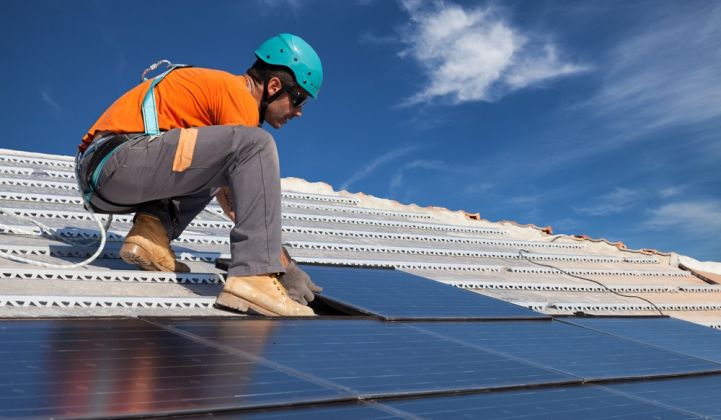Tesla will now rent solar systems to customers in six states for $50 a month, in a scheme to boost residential solar deployments after it logged its lowest quarterly installations ever in Q2.
In a Sunday tweet, CEO Elon Musk said the new sales model is “like having a money printer on your roof if you live in a state with high electricity costs.” Customers of 20 utilities in Arizona, California, Connecticut, Massachusetts, New Jersey and New Mexico — states with relatively high electricity costs and good solar resources — can sign up for rentals.
There's no cancellation fee if a customer wants to end their month-to-month agreement. If a customer cancels, Tesla said, they can either leave the de-energized panels up or pay Tesla $1,500 to uninstall the system. Michelle Davis, a senior solar analyst at Wood Mackenzie Power & Renewables, said that's no small amount of money when "keeping the panels on your roof simply means cheaper electric bills."
"It's probable that very few customers will elect to remove their systems," she said.
A Tesla spokesperson said the fee exists to cover removal costs and that the company makes no profit from cancellations.
Though similar to a lease without the long-term contract, Tesla's latest move is an experimental one, and not the first from the company. Tesla announced in April that it would start selling residential systems in modular increments to cut costs. Potential customers can now select from a small, medium-sized or large system and pay a $100 down payment on Tesla’s website.
Most of Tesla’s competitors rely on signing customers to solar leases, long-term power-purchase agreements or third-party-ownership plans using by-any-means-necessary methods, including door-to-door sales and partnerships with big-box retailers.
By contrast, Tesla has slashed numerous sales channels in a bid to shear customer-acquisition costs. The company ended the door-to-door sales of its predecessor SolarCity, cut its partnership with Home Depot in 2018 and recently closed many of its stores, gambling that it could sell solar mostly online.
So far, that gamble has not paid off. In Q2, installations plummeted to new lows of 29 megawatts, compared to the 2,013 megawatts residential leader Sunrun installed. SolarCity once installed 253 megawatts in one quarter, back in 2015 before Tesla absorbed it.
This story has been updated with more information from Tesla.




